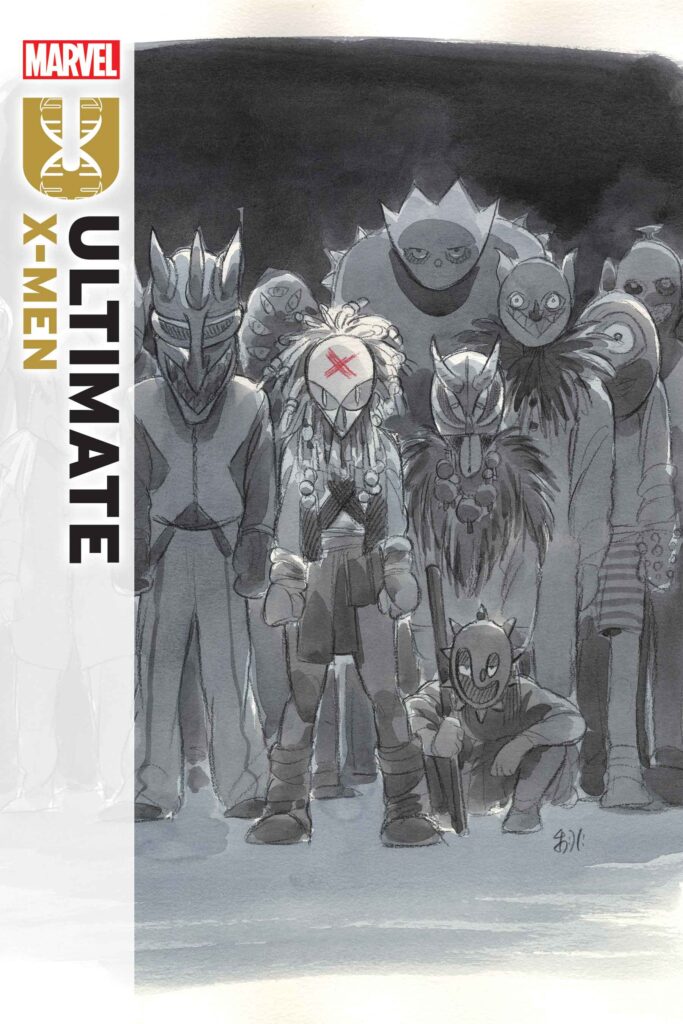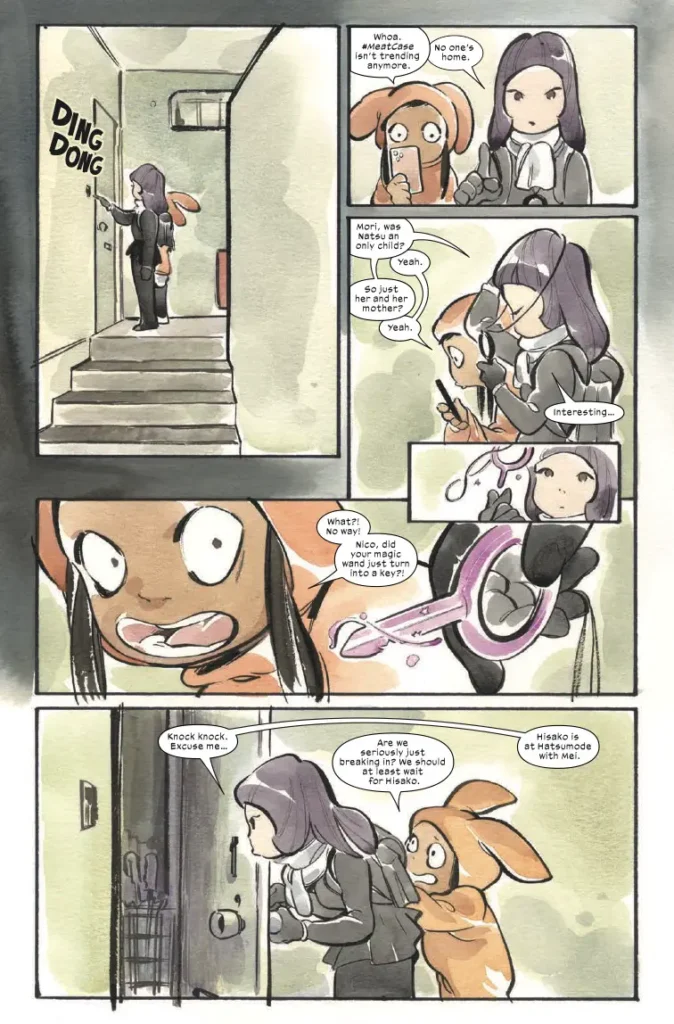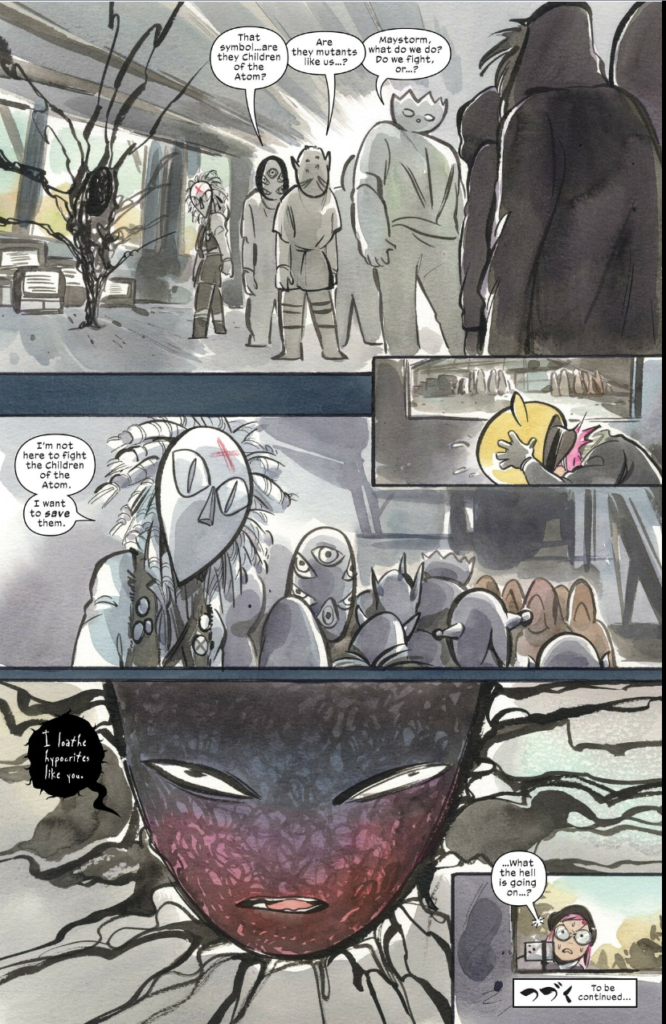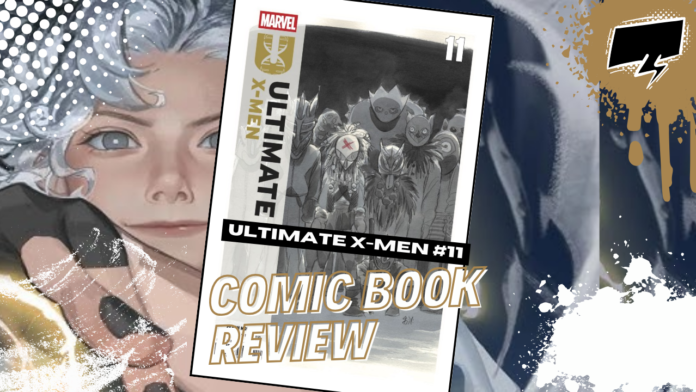The tension in Ultimate X-Men has been steadily rising, and issue #11 brings us one step closer to an inevitable breaking point. With anti-mutant sentiments surging and young mutants like Hisako (Armor) and Natu struggling to find their place in a hostile world, this issue continues the slow burn that has defined Peach Momoko’s unique take on the Ultimate universe. But does this chapter push the story forward, or does it get lost in its own dreamlike storytelling?

Ultimate X-Men #11 juggles multiple plotlines, carefully maintaining the book’s measured pacing while adding a few much-needed moments of action and intrigue. The issue opens with Nico and Mori breaking into Natu’s apartment, unaware of the trouble lurking inside. This sequence delivers some compelling surprises, including Nico revealing a previously unknown ability. However, the details remain vague, leaving readers with more questions than answers.
One of the standout moments of the issue is the confrontation between Hisako and Kanon (Psylocke). Their fight is brief but visually arresting, fully embracing the fantastical nature of their abilities. This clash is an excellent showcase of Momoko’s artistic strengths, blending energy effects and dynamic movement to make the action feel weightless and otherworldly.
For those hoping for stronger connections between Ultimate X-Men and the wider Ultimate universe, this issue delivers. A direct tie-in to Ultimate Spider-Man #13 makes the world feel more cohesive, while Ultimate Black Panther gets a subtle nod, further reinforcing the interconnected nature of this reimagined Marvel landscape.

However, the storytelling is still somewhat abstract, with characters often speaking in riddles rather than clearly progressing the plot. The overarching conflict between the “good” mutants and the cult-like Children of the Atom continues to stretch out, leaving readers wondering when this slow-building tension will finally erupt.
Closing out the issue is an unsettling scene featuring the Shadow King, who literally emerges from a television screen to interrupt a meeting of mutants attempting to resist the cult’s influence. His presence adds an eerie, almost horror-like element to the book, with his twisted, storybook-inspired design making him one of the most visually haunting threats in the series.
While there are intriguing ideas at play, the issue’s slow pace and ambiguous dialogue may test the patience of readers eager for more narrative momentum.

If there’s one undeniable strength of Ultimate X-Men #11, it’s Peach Momoko’s breathtaking artwork. Her watercolor style continues to be the book’s defining feature, giving every panel a dreamlike, almost ethereal quality. The use of soft, blended colors contrasts sharply with the harsh realities the characters face, creating a striking visual tension that mirrors the story’s themes.
The fight between Hisako and Kanon is a highlight, with Momoko’s fluid brushwork making their abilities feel almost like magic. Energy effects swirl and crackle, adding an extra layer of dynamism to the action. Even outside of combat, her artwork enhances the emotional beats of the issue, particularly in the moments of quiet tension between characters.
The Shadow King’s appearance is another artistic triumph. His emergence from the television screen is genuinely unsettling, with his distorted, nightmare-like form evoking a sense of creeping dread. Momoko’s ability to blend horror elements into the book’s already surreal aesthetic makes for a truly unique take on the X-Men mythos.

While the art is undoubtedly stunning, it sometimes contributes to the book’s vagueness. The painterly style can make action sequences feel less immediate, and combined with the cryptic dialogue, it occasionally leaves the story feeling more abstract than it needs to be.
Ultimate X-Men #11 is another visually breathtaking installment in the series, with Peach Momoko’s artwork elevating every scene. The action sequences, particularly the clash between Hisako and Kanon, showcase her ability to blend energy and movement in a way that feels truly unique. Meanwhile, the Shadow King’s eerie presence adds a welcome dose of horror to the narrative.
However, the slow pace and lack of narrative clarity continue to be sticking points. While the book excels in atmosphere and artistry, the story’s reluctance to provide concrete answers may frustrate readers eager for more direct progression. Fans of interconnected storytelling will appreciate the links to other Ultimate titles, but those hoping for a major turning point may find this issue more of a tease than a payoff.

